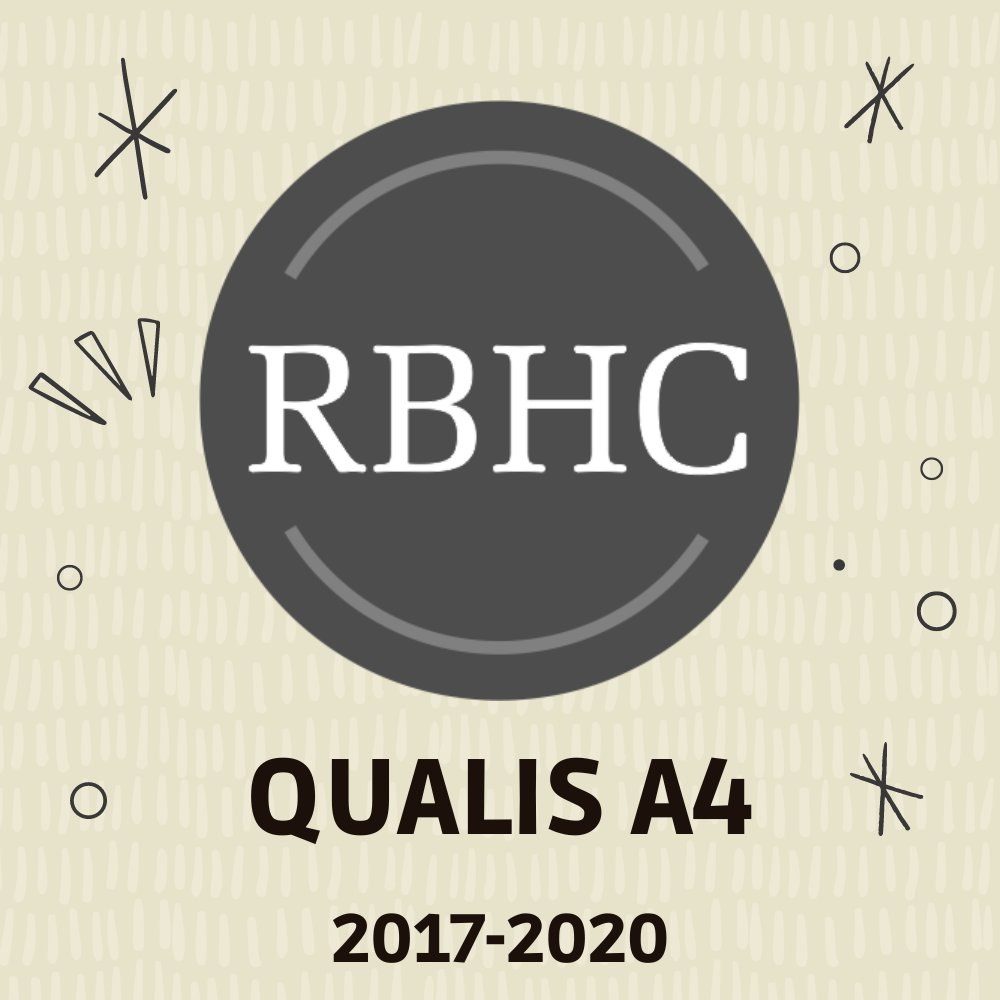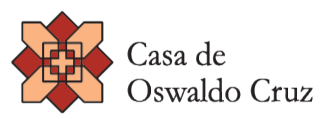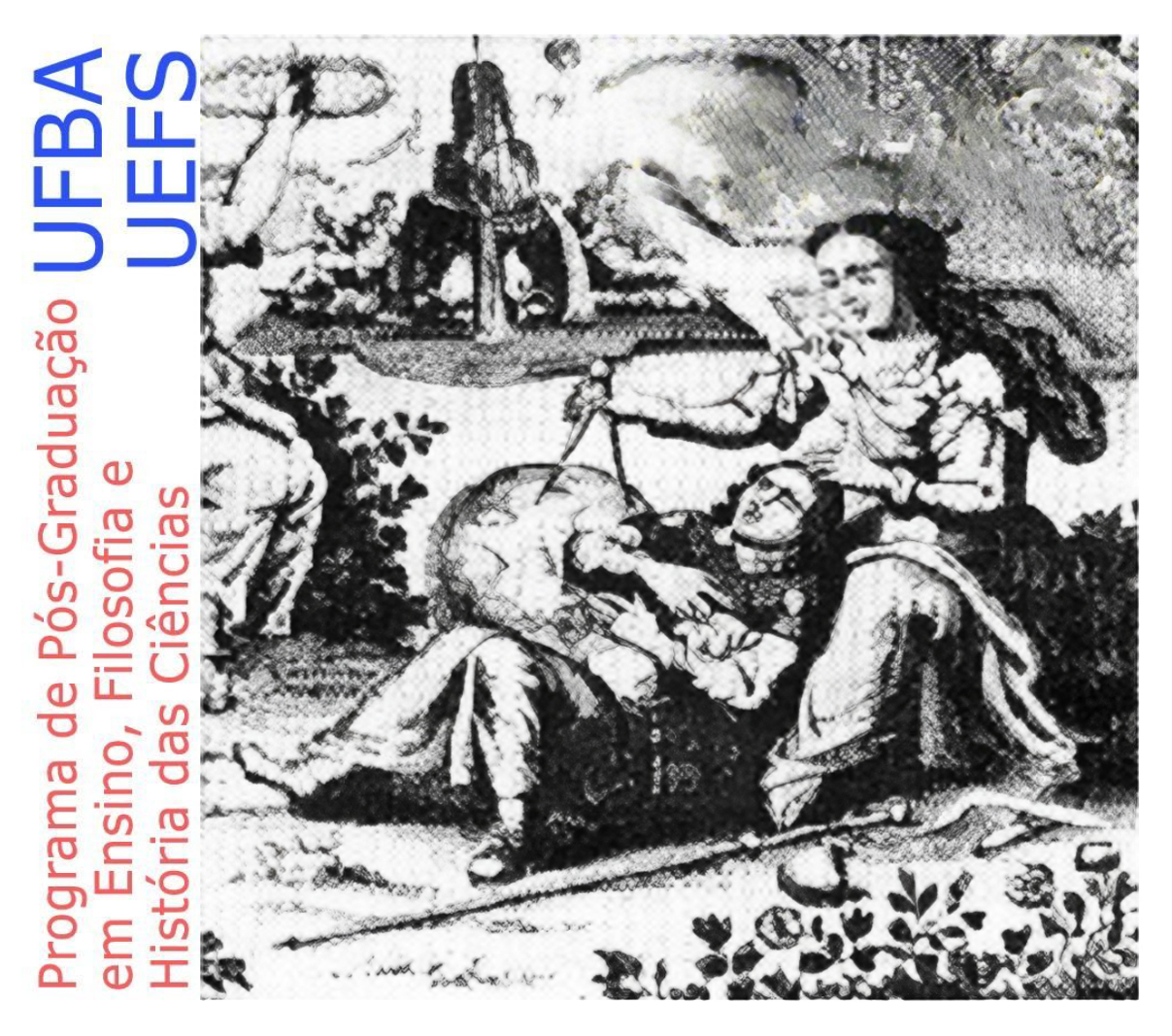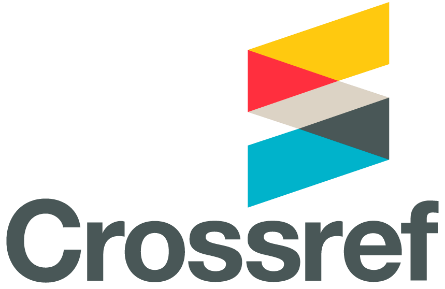Isótopos das águas brasileiras para o desenvolvimento
a hidrologia isotópica, os peritos do Centro de Energia Nuclear na Agricultura e de organizações internacionais no Nordeste e na Amazônia (1968-1978)
DOI:
https://doi.org/10.53727/rbhc.v17i1.1009Palavras-chave:
hidrologia isotópica , Amazônia , Nordeste , Guerra Fria , desenvolvimentoResumo
Este trabalho apresenta os itinerários de cientistas do Centro de Energia Nuclear na Agricultura (Cena) e suas pesquisas sobre as águas do Nordeste e da Amazônia entre 1960 e 1970 e, de forma mais ampla, apresenta a hidrologia isotópica transnacional durante a Guerra Fria. O Cena, vinculado à Comissão Nacional de Energia Nuclear e à Universidade de São Paulo em Piracicaba, fez parte de um convênio de cooperação técnica com as Nações Unidas, gerido pela Agência Internacional de Energia Atômica (AIEA), e recebeu visitas técnicas de muitos peritos estrangeiros dos Estados Unidos, Europa e Israel. Eneas Salati, professor do Cena, montou o laboratório de ecologia isotópica em 1968 e coordenou uma rede transnacional para auxiliar o governo brasileiro em estudos hidrológicos. Este artigo apresenta a constituição dessa rede e o papel central dos pesquisadores brasileiros na formulação das agendas e dos resultados de pesquisa. Os trabalhos da rede focaram-se principalmente no sertão do Nordeste e na Amazônia, para onde voltavam-se projetos desenvolvimentistas do regime militar, e buscavam apoiar a Superintendência de Desenvolvimento do Nordeste (Sudene) e do Instituto Nacional de Pesquisas da Amazônia (Inpa). Enquanto no projeto no semiárido os pesquisadores buscavam encontrar maneiras de ampliar o acesso à água, numa região caracterizada como carente em recursos hídricos de qualidade, no projeto conduzido na Amazônia os pesquisadores levantavam a hipótese de um equilíbrio entre a floresta e o clima, que poderia ser alterado pelos projetos desenvolvimentistas e o crescente desmatamento.
Downloads
Referências
ADAMSON, M. Science diplomacy at the International Atomic Energy Agency: isotope hydrology, development, and the establishment of a technique. Journal of Contemporary History, v. 53, n. 3, p. 522-542, 2021. DOI: https://doi.org/10.1177/0022009421997888
AGGARWAL, P.K. et al. Global hydrological isotope data and data networks. In: WEST, J.B. et al. (ed.). Isoscapes: understanding movement, pattern, and process on Earth through isotope mapping. Dordrecth: Springer, 2010. p. 33-50. DOI: https://doi.org/10.1007/978-90-481-3354-3_2
ANDRADE, A.M.R.; SANTOS, T.L. A dinâmica política da criação da Comissão Nacional de Energia Nuclear (1956-1960). Boletim do Museu Paraense Emílio Goeldi. Ciências Humanas, v. 8, n. 1, p. 113-128, 2013. DOI: https://doi.org/10.1590/S1981-81222013000100007
ANDRADE, J.B.F. Os sertões em debate: fronteiras, secas e instituições. Projeto História, São Paulo, v. 69, p. 275-311, 2020. DOI: https://doi.org/10.23925/2176-2767.2020v69p275-311
ANDRADE, R.P. A Amazônia na era do desenvolvimento: saúde, alimentação e meio ambiente (1946-1966). Tese (Doutorado em História da Ciência) – Casa de Oswaldo Cruz/Fiocruz, Rio de Janeiro, 2012.
ANDRADE, R.P. Contribuições para um debate: a antropologia do desenvolvimento e a valorização econômica da Amazônia (1951-1955). Cadernos do Desenvolvimento, Rio de Janeiro, v. 10, n. 16, p. 53-72, 2015.
BATISSE, M. The Unesco water adventure: from desert to water… (1948-1974): from the Arid Zone Programme to the International Hydrological Decade. Trad. Linda Blake. Paris: United Nations Educational, Scientific and Cultural Organization, 2005.
BATISTA, I.M.S. A natureza nos planos de desenvolvimento da Amazônia (1955-1985). Tese (Doutorado em História Social) – Universidade Federal do Pará, Belém, 2016.
BONASERA, J. Green Malthus? A bibliographical itinerary between neo-malthusianism and environmentalism. Storicamente: Laboratorio de Storia, v. 18, n. 11, p. 1-22, 2022. Disponível em: https://storicamente.org/sites/default/images/articles/media/2213/borasera_greenmalthus.pdf. Acesso em: 10 jan. 2014. DOI: https://doi.org/10.52056/9791254691984/11
BRASIL. Ministério das Relações Exteriores. Acordo de cooperação para usos civis da energia atômica entre o governo dos Estados Unidos do Brasil e o governo dos Estados Unidos da América. Rio de Janeiro: Ministério das Relações Exteriores, 3 ago. 1955. Disponível em: https://aplicacao.itamaraty.gov.br/ApiConcordia/Documento/download/21510. Acesso em: 10 jan. 2023.
BRASIL. Ministério das Relações Exteriores. Acordo Básico de Cooperação Técnica entre o governo dos Estados Unidos do Brasil e o governo de Israel. Recife, PE: Ministério das Relações Exteriores, 12 mar. 1962. Disponível em: https://aplicacao.itamaraty.gov.br/ApiConcordia/Documento/download/21975. Acesso em: 12 jan. 2024.
BRASIL. Ministério das Relações Exteriores. Acordo complementar entre os Estados Unidos do Brasil e o Estado de Israel de cooperação econômica e técnica ao Acordo Básico de Cooperação Técnica de 12 de março de 1962. 30 jan. 1963. Disponível em: https://aplicacao.itamaraty.gov.br/ApiConcordia/Documento/download/21982. Acesso em: 12 jan. 2023.
BRASIL. Ministério das Relações Exteriores. Convênio entre os Estados Unidos do Brasil e o Estado de Israel sobre a utilização da energia nuclear para fins pacíficos, primeiro convênio complementar ao Acordo Básico de Cooperação Técnica de 12 de março de 1962. Rio de Janeiro: Ministério das Relações Exteriores, 11 maio 1966. Disponível em: https://aplicacao.itamaraty.gov.br/ApiConcordia/Documento/download/21990. Acesso em: 12 jan. 2023.
BRASIL. Ministério das Relações Exteriores. Divisão de Atos Internacionais. Relação de acordos. Brasília: Ministério das Relações Exteriores, 2023.
BRASIL. Ministério da Ciência, Tecnologia e Inovação. Comissão Nacional de Energia Nuclear. Rio de Janeiro, 2024. Disponível em: https://www.gov.br/cnen/pt-br. Acesso em: 15 jan. 2024.
BRASILEIROS no laboratório de Argonne. Correio da Manhã, Rio de Janeiro, 13 fev. 1962. Disponível em: https://bndigital.bn.gov.br/hemeroteca-digital/. Acesso em: 15 mar. 2023.
BRUNNÉE, C. 50 years of MAT in Bremen. Rapid Communications in Mass Spectrometry, v. 11, p. 694-707, 1997. DOI: https://doi.org/10.1002/(SICI)1097-0231(199704)11:6<694::AID-RCM888>3.0.CO;2-K
BUCKLEY, E.E. Technocrats and the politics of drought and development in twentieth-century Brazil. Chapel Hill: The University of North Carolina Press, 2017. DOI: https://doi.org/10.5149/northcarolina/9781469634302.001.0001
CENA, Centro de Energia Nuclear na Agricultura. Relatório de atividades (1967). Piracicaba: Cena, 1968.
CENA, Centro de Energia Nuclear na Agricultura. Relatório de atividades (1968). Piracicaba: Cena, 1969.
CENA, Centro de Energia Nuclear na Agricultura. Relatório de atividades (1970). Piracicaba: Cena, 1971.
CENA, Centro de Energia Nuclear na Agricultura. Relatório de atividades (1971). Piracicaba: Cena, 1972.
CENA, Centro de Energia Nuclear na Agricultura. Relatório de atividades (1972). Piracicaba: Cena, 1973.
CENA, Centro de Energia Nuclear na Agricultura. Relatório de atividades (1973). Piracicaba: Cena, 1974.
CENA, Centro de Energia Nuclear na Agricultura. Relatório de atividades (1968-1977). 2. ed. Piracicaba: Cena, 1978.
CERVELLINI, A.; VOSE, P. The development and work of the Centro de Energia Nuclear na Agricultura (Cena) in Piracicaba. IAEA Bulletin, v. 18, supl., p. 33-38, 1976.
CHASTAIN, A.B.; LOREK, T.W. Introduction. In: Chastain, A.B.; Lorek, T.W. (ed.). Itineraries of expertise: science, technology, and the environment in Latin America’s long Cold War. Pittsburgh: University of Pittsburgh Press, 2020. p. 3-27. DOI: https://doi.org/10.2307/j.ctvz939bd.5
CHOW, V.T. The progress of hydrology. In: IAEA, International Atomic Energy Agency. Isotopes in Hydrology: proceedings of a symposium, Vienna, 14-18 Nov. 1966, held by the IAEA in co-operation with the IUGG. Viena: IAEA, 1967. p. 3-20.
CNEN, Comissão Nacional de Energia Nuclear. Relatório anual (1968). Rio de Janeiro: CNEN, 1969.
CREAGER, A. Life atomic: a history of radioisotopes in science and medicine. Chicago: The University of Chicago Press, 2013. DOI: https://doi.org/10.7208/chicago/9780226017945.001.0001
CULLATHER, N. Development? It’s history. Diplomatic History, v. 24, n. 4, p. 641-653, 2000. DOI: https://doi.org/10.1111/0145-2096.00242
DANSGAARD, W. Stable isotopes in precipitation. Tellus, v. 16, n. 4, p. 436-468, 1964. DOI: https://doi.org/10.1111/j.2153-3490.1964.tb00181.x
DAVIS, D.K. The arid lands: history, power, knowledge. Cambridge: MIT Press, 2016. DOI: https://doi.org/10.7551/mitpress/10651.001.0001
DOMINGOS, M. O militar e a ciência no Brasil: os generais e o CNPq. In: Encontro Anual da Anpocs, 30., 2006, Caxambu. Anais […]. Caxambu: Associação Nacional de Pós-graduação e Pesquisa em Ciências Sociais, 2006. p. 1-18. Disponível em: https://cpdoc.fgv.br/sites/default/files/cfa21/940.pdf. Acesso em: 10 mar. 2024
DROGAN, M. The atoms for peace program and the Third World. Cahiers du Monde Russe, v. 60, n. 2-3, p. 441-460, 2019. DOI: https://doi.org/10.4000/monderusse.11249
DRY, S. Waters of the world: the story of the scientists who unravelled the mysteries of our seas, glaciers, and atmosphere: and made the planet whole. London: Scribe, 2019. DOI: https://doi.org/10.7208/chicago/9780226670041.001.0001
ESCOBAR, A. Encountering development: the making and unmaking of the third world. Princeton: Princeton University Press, 1995.
FARIA, L.; COSTA, M.C.C. Cooperação científica internacional: estilos de atuação da Fundação Rockefeller e da Fundação Ford. Dados, Rio de Janeiro, v. 49, n. 1, p. 159-191, 2006. DOI: https://doi.org/10.1590/S0011-52582006000100007
FISCHER, D. History of the international atomic energy agency: the first forty years. Viena: International Atomic Energy Agency, 1997.
GAMA, W.; VELHO, L. A cooperação científica internacional na Amazônia. Estudos Avançados, São Paulo, v. 19, n. 54, p. 205-224, 2005. Disponível em: https://www.scielo.br/j/ea/a/Z5Nz3KWBTyTGwdc8MqfvQgv. Acesso em: 4 abr. 2023. DOI: https://doi.org/10.1590/S0103-40142005000200012
GAT, J.R.; MOOK, W.G.; MEIJER, H.A. Environmental isotopes in the hydrological cycle: principles and applications. v. 2: Atmospheric water. Viena: International Atomic Energy Agency, 2001. Disponível em: https://unesdoc.unesco.org/ark:/48223/pf0000149442. Acesso em: 15 jan. 2024.
GNACCARINI, I.C.S. Interdisciplinaridade, ecologia e clima na Amazônia: diálogos entre pioneiros: Eneas Salati e Aziz Ab’Saber. Dissertação (Mestrado em Geografia) – Pontifícia Universidade Católica de São Paulo, São Paulo, 2014.
HAMBLIN, J.D. Oceanographers and the Cold War: disciples of marine science. Seattle: University of Washington Press, 2005.
HAMBLIN, J.D. Let there be light… and bread: the United Nations, the developing world, and atomic energy’s Green Revolution. History and Technology, v. 25, n. 1, p. 25-48, 2009. DOI: https://doi.org/10.1080/07341510802618166
HAMBLIN, J.D. The wretched atom: America’s global gamble with peaceful nuclear technology. Oxford: Oxford University Press, 2021. DOI: https://doi.org/10.1093/oso/9780197526903.001.0001
HAMLIN, C. Waters or water? Master narratives in water history and their implications for contemporary water policy. Water Policy, v. 2, n. 4-5, p. 313-325, 2000. DOI: https://doi.org/10.1016/S1366-7017(00)00012-X
HERRAN, N.; ROQUÉ, X. Tracers of modern technoscience. Dynamis, v. 29, p. 123-130, 2009. DOI: https://doi.org/10.4321/S0211-95362009000100006
HEYMANN, M. Climate as resource and challenge: international cooperation in the Unesco Arid Zone Programme. European Review of History/Revue européenne d’histoire, v. 27, n. 3, p. 294-320, 2020. DOI: https://doi.org/10.1080/13507486.2020.1737649
HÖGSELIUS, P. Atomic shocks of the old: putting water at the center of nuclear energy history. Technology and Culture, v. 63, n. 1, 2022. Disponível em: https://muse.jhu.edu/article/844162. Acesso em: 15 jan. 2024. DOI: https://doi.org/10.1353/tech.2022.0000
HUGHES, J. Making isotopes matter: Francis Aston and the mass-spectrograph. Dynamis, v. 29, p.131-165, 2009. DOI: https://doi.org/10.4321/S0211-95362009000100007
IAEA, International Atomic Energy Agency. Application of isotope techniques in Hydrology: a comprehensive report from a panel held in Vienna, 6-9 November (1961). Viena: IAEA, 1962. (Technical report series, n. 11)
IAEA, International Atomic Energy Agency. Radioisotopes in hydrology: proceedings of the symposium on the application of radioisotopes in hydrology held by the International Atomic Energy Agency in Tokyo, 5-9 Mar. 1963. Viena: IAEA, 1963.
IAEA, International Atomic Energy Agency. The staff of the Agency. Information circular 22, rev. 5, 30 August 1965. Viena: IAEA, 1965. Disponível em: https://www.iaea.org/sites/default/files/publications/documents/infcircs/1960/infcirc22r5.pdf Acesso em: 20 jan. 2024.
IAEA, International Atomic Energy Agency. Isotopes in hydrology: proceedings of a symposium, Vienna, 14-18 Nov. 1966, held by the IAEA in cooperation with the IUGG. Viena: IAEA, 1967.
IAEA, International Atomic Energy Agency. Isotope hydrology 1970. Proceedings of a Symposium on the use of isotopes in hydrology held by the International Atomic Energy Agency in co-operation with the United Nations Educational, Scientific and Cultural Organization in Vienna, 9-13 March 1970. Viena: IAEA, 1970.
IAEA, International Atomic Energy Agency. Application of nuclear technology in agriculture BRA-71-556. Brazil. Project findings and recommendations (Phase I). Report prepared for the Government of Brazil by the IAEA acting as executing agency for the UNDP. Viena: United Nations Development Programme; IAEA, 1979.
INFORME JB: lance-livre. Jornal do Brasil, Rio de Janeiro, 16 maio 1968.
JOHNSON, M.P. Temples of modern pharaohs: an environmental history of dams and dictatorship in Brazil, 1960-1990s. Tese (Doutorado em História) – Georgetown University, Washington, 2021.
KRIGE, J. Introduction. In: Krige, J. (ed.). How knowledge moves: writing the transnational history of science and technology. Chicago: The University of Chicago Press, 2019. p. 1-34. DOI: https://doi.org/10.7208/chicago/9780226606040.001.0001
KRIGE, J. Atoms for peace: scientific internationalism, and scientific intelligence. Osiris, v. 21, n. 1, p. 161-181, 2006. DOI: https://doi.org/10.1086/507140
LAMM, C.G. The application of nuclear science to agriculture in Piracicaba. IAEA Bulletin, v. 18, n. 3, p. 34-36, 1976.
LAMM, C.G. The history of the joint FAO/IAEA Division of Nuclear Techniques in Food and Agriculture and its allied laboratory (1964-1994). Viena: International Atomic Energy Agency, 1994.
LEÃO, R.M. Trinta anos em Cena (1966-1996). São Paulo: Editora da Universidade de São Paulo, 1997.
LOLCK, M. Klima, kold krig og iskerner: en historie om baggrunden for dansk iskerneforskning og den første internationale dybdeboring i Grønland. Tese (Doutorado em História da Ciência) – Universidade de Aarhus, Aarhus, 2004. Disponível em: https://www.isogklima.nbi.ku.dk/publikationer/afhandlinger/Speciale_Maiken_Lolck.pdf. Acesso em: 10 out. 2023.
LÜSCHER, F. The nuclear spirit of Geneva boundary‐crossing relationships of Soviet atomic scientists after 1955. Jahrbücher für Geschichte Osteuropas, v. 66, n. 1, p. 20-44, 2018. DOI: https://doi.org/10.25162/jgo-2018-0002
MARTIN, C. Geochemistry pioneer part of Nobel-winner’s lab team. The Denver Post, Denver, 11 jul. 2005. Disponível em: https://www.denverpost.com/2005/07/11/geochemistry-pioneer-part-of-nobel-winners-lab-team/. Acesso em: 26 jan. 2024.
MARTIN-NIELSEN, J. “The deepest and most rewarding hole ever drilled”: ice cores and the Cold War in Greenland. Annals of Science, v. 70, n. 1, p. 47-70, 2013. DOI: https://doi.org/10.1080/00033790.2012.721123
MARTINS, F.D. Conhecimento científico, instituições e o rio São Francisco (1850-1948). Revista Brasileira de História da Ciência, v. 16, n. 1, p. 135-157, 2023. DOI: https://doi.org/10.53727/rbhc.v16i1.850
MARTINS, M.D. O Banco Mundial e a política científica dos governos militares no Brasil. Tensões Mundiais, v.6, n. 11, p. 129-151, 2012. DOI: https://doi.org/10.33956/tensoesmundiais.v6i11.655
MASCO, J. Bad weather: on planetary crisis. Social Studies of Science, v. 40, n. 1, p. 7-40, 2010. DOI: https://doi.org/10.1177/0306312709341598
MELLO, V.P.S. A Embrapa na Amazônia oriental: ditadura militar, desenvolvimento e ambientalismo (1972-1993). Tese (Doutorado em História das Ciências e da Saúde) – Fundação Oswaldo Cruz, Rio de Janeiro, 2017.
MOLINA, R.S. Agro, ditadura e universidade: Esalq-USP e a modernização conservadora (1964 a 1985). Campinas: Autores Associados, 2022.
MOOK, W.G. Environmental isotopes in the hydrological cycle: principles and applications. v. I: Introduction. Theory, methods, review. Viena: IAEA; Paris: Unicef, 2000. Disponível em: https://unesdoc.unesco.org/ark:/48223/pf0000121907.locale=en. Acesso em: 15 jan. 2024.
MOTOYAMA, S. (org.). Prelúdio para uma história: ciência e tecnologia no Brasil. São Paulo: Edusp, 2004.
OITO brasileiros estudam ciência nuclear nos EUA. A Noite, Rio de Janeiro, 18 fev. 1961. Disponível em: https://bndigital.bn.gov.br/hemeroteca-digital/. Acesso em: 15 mar. 2023.
OLTMAN, R.E; STERNBERG, H.O’R.; AMES, F.C.; DAVIS JR., L.C. Amazon river investigations reconnaissance measurements of July 1963. Geological Survey Circular, n. 486, 1964. DOI: https://doi.org/10.3133/cir486
ORESKES, N. Science in the origins of the Cold War. In: Oreskes, N.; Krige, J. Science and technology in the global Cold War. Cambridge: The MIT Press, 2014. p. 11-29. DOI: https://doi.org/10.7551/mitpress/9780262027953.003.0001
PANZU, A.N.S. O Instituto Nacional de Pesquisas da Amazônia, Inpa: trajetória institucional por meio de suas práticas científicas, 1954-1975. Dissertação (Mestrado em História) – Universidade Federal do Amazonas, Manaus, 2015.
PATTI, C. The origins of the Brazilian nuclear programme (1951-1955). Cold War History, v. 15, n. 3, p. 353-373, 2014a. DOI: https://doi.org/10.1080/14682745.2014.968557
PATTI, C. (org.). O programa nuclear brasileiro: uma história oral. Rio de Janeiro: Editora FGV, 2014b.
PAYNE, B.R. Isotope hydrology in Latin America. IAEA Bulletin, v. 18, n. 3, p. 37-41, 1976.
PESQUISAS indicam o futuro para Amazônia e Nordeste. Jornal do Brasil, Rio de Janeiro, 25 set. 1977.
ROBERTSSON, T. Cold War landscapes: towards an environmental history of US development programmes in the 1950s and 1960s. Cold War History, v. 16, n. 4, p. 417-441, 2015. DOI: https://doi.org/10.1080/14682745.2014.950238
ROJAS, D.M. Climate politics after nature and the management of global environmental crises in Brazilian Amazonia. Tese (Doutorado em Antropologia) – Cornell University, Itahaca, 2015.
ROTHSCHILD, R. Environmental awareness in the atomic age: radioecologists and nuclear technology. Historical Studies in the Natural Sciences, v. 43, n. 4, p. 492-530, 2013. DOI: https://doi.org/10.1525/hsns.2013.43.4.492
SÁ, M.R.; SÁ, D.M.; SILVA, A.F.C. Apresentação. In: Sá, M.R.; Sá, D.M.; Silva, A.F.C. As ciências na história das relações Brasil-EUA. Rio de Janeiro: Mauad X; Faperj, 2020. p. 7-22.
SALATI, E.; GUSMÃO, G.A.; MATSUI, E.; CERVELLINI, A. Estudo preliminar das concentrações de 18O e D em águas do Nordeste brasileiro. Boletim Científico Cena, n. 2, 1971.
SALATI, E.; LEAL, J.M.; CAMPOS, M.M. Environmental isotopes used in a hydrogeological study in Northeastern Brazil. In: IAEA, International Atomic Energy Agency. Isotope techniques in groundwater hydrology 1974: proceedings of a symposium, Vienna, 11-15 Mar. 1974. v. 1. Viena: IAEA, 1974. p. 259-284.
SALATI, E.; RIBEIRO, M.N.G. Floresta e clima. Acta Amazonica, v. 9, n. 4, p. 15-22, 1979. DOI: https://doi.org/10.1590/1809-43921979094s015
SALATI, E.; VOSE, P.B. Amazon basin: a system in equilibrium. Science, v. 225, n. 4658, p. 129-138, 1984. DOI: https://doi.org/10.1126/science.225.4658.129
SALLES FILHO, S. Política de ciência e tecnologia no I PND (1972-1974) e no I PBDCT (1973-1974). Revista Brasileira de Inovação, Campinas, v. 1, n. 2, p. 397-419, 2009. Disponível em: https://periodicos.sbu.unicamp.br/ojs/index.php/rbi/article/view/8648865. Acesso em: 14 mar. 2024. DOI: https://doi.org/10.20396/rbi.v1i2.8648865
SCHWARTZMAN, S. Um espaço para a ciência: a formação da comunidade científica no Brasil. Brasília: Ministério da Ciência e Tecnologia/Centro de Estudos Estratégicos, 2001.
SECORD, J.A. Knowledge in transit. Isis, v. 95, n. 4, p. 654-672, 2004. DOI: https://doi.org/10.1086/430657
SELCER, P. The postwar origins of the global environment: how the United Nations built spaceship Earth. Nova York: Columbia University Press, 2018. DOI: https://doi.org/10.7312/selc16648
SIGURBJÖRNSSON, B.; VOSE, P. Les techniques nucléaires au service de l’alimentation et de l’agriculture (1964-1994). AIEA Bulletin, Viena, v. 36, n. 3, p. 41-47, 1994. Disponível em: https://www.iaea.org/sites/default/files/publications/magazines/bulletin/bull36-3/36305484148_fr.pdf. Acesso em: 20 jan. 2024.
SILVA, C.M. Nelson Rockefeller e a atuação da American International Association for Economic and Social Development: debates sobre missão e imperialismo no Brasil (1946-1961). História, Ciências, Saúde – Manguinhos, Rio de Janeiro, v. 20, n. 4, p. 1695-1711, 2013. DOI: https://doi.org/10.1590/S0104-597020130005000014
TÉCNICOS israelenses em energia nuclear chegarão ao Brasil por esses dias. Jornal do Brasil, Rio de Janeiro, 10 abr. 1968.
UNESCO, United Nations Educational, Scientific and Cultural Organization. The problems of the arid zone: proceedings of the Paris Symposium. Paris: Unesco, 1962.
UNESCO, United Nations Educational, Scientific and Cultural Organization. Proposals for an international hydrological decade. Preparatory meeting of experts in the field of scientific hydrology. UNESCO/NS/NR/22, WS/0463.22. Paris: United Nations Educational, Scientific and Cultural Organization, 1963. Disponível em: https://unesdoc.unesco.org/ark:/48223/pf0000138698_eng.locale=en. Acesso em: 15 jan. 2024.
USA, United States of America. 85th Congress, 2nd Session. House of Representatives. Government programs in international education: a survey and handbook. 42nd report by the Committee on Government Operations. Washington: United States Government Printing Office, 1959.
UNDP, United Nations Development Programme. Project of the Government of Brazil. Phase II: development of agricultural production through the application of nuclear technology. Brasília: UNDP Resident Representative, 1978. (Mimeo)
VARELA, A.G.; DOMINGUES, H.M.B.; COIMBRA, C.A. A circulação internacional dos cientistas brasileiros nos primeiros anos do CNPq (1951-1955). Revista Brasileira de História da Ciência, Rio de Janeiro, v. 6, n. 2, p. 301-319, 2013. DOI: https://doi.org/10.53727/rbhc.v6i2.270
VIAJA JR., M.M. A irrigação no Brasil na mira do capital internacional (1964-1975). Revista de História, São Paulo, n. 180, p. 1-33, 2021.
Recebido em janeiro de 2024
Aceito em março de 2024
Downloads
Publicado
Edição
Seção
Licença
Copyright (c) 2024 André Secchieri Bailão

Este trabalho está licenciado sob uma licença Creative Commons Attribution-NonCommercial-NoDerivatives 4.0 International License.



















